<< Our Photo Pages >> Ostia Antica - Ancient Village or Settlement in Italy in Lazio/Roma
Submitted by ladrin on Monday, 19 May 2025 Page Views: 598
Roman, Greek and ClassicalSite Name: Ostia Antica Alternative Name: Parco Archeologico di Ostia AnticaCountry: Italy
NOTE: This site is 1.447 km away from the location you searched for.
Region: Lazio/Roma Type: Ancient Village or Settlement
Nearest Town: Lido di Ostia
Latitude: 41.756492N Longitude: 12.294444E
Condition:
| 5 | Perfect |
| 4 | Almost Perfect |
| 3 | Reasonable but with some damage |
| 2 | Ruined but still recognisable as an ancient site |
| 1 | Pretty much destroyed, possibly visible as crop marks |
| 0 | No data. |
| -1 | Completely destroyed |
| 5 | Superb |
| 4 | Good |
| 3 | Ordinary |
| 2 | Not Good |
| 1 | Awful |
| 0 | No data. |
| 5 | Can be driven to, probably with disabled access |
| 4 | Short walk on a footpath |
| 3 | Requiring a bit more of a walk |
| 2 | A long walk |
| 1 | In the middle of nowhere, a nightmare to find |
| 0 | No data. |
| 5 | co-ordinates taken by GPS or official recorded co-ordinates |
| 4 | co-ordinates scaled from a detailed map |
| 3 | co-ordinates scaled from a bad map |
| 2 | co-ordinates of the nearest village |
| 1 | co-ordinates of the nearest town |
| 0 | no data |
Internal Links:
External Links:
I have visited· I would like to visit
Megalithic89 visited on 1st Jan 1988 - their rating: Cond: 5 Amb: 4 Access: 5 Phantastic place and atmosphere.
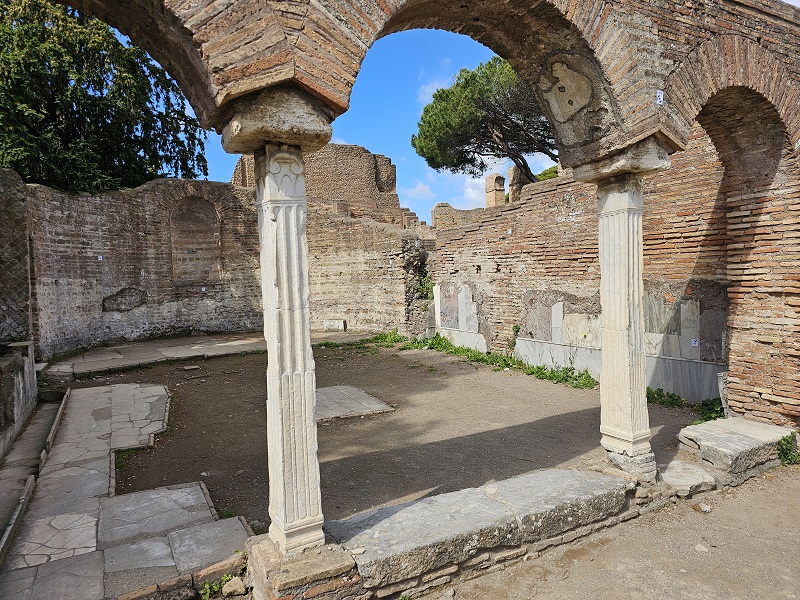
I was told by locals that Ostia Antica is actually better to visit than the Roman Forum or even Pompeii, especially when it comes to crowds and accessibility. After our visit in late April I can only agree.
The settlement dates back to the 4th century BC when the Romans built a small military fortress (castrum) there. By the 2nd century BC it had already grown into a thriving and rapidly developing town. Its importance was obvious, Ostia was the closest seaport, a vital lifeline linking Rome with Egypt, the empire’s main grain supplier, so essential for maintaining civil peace.
A large amphitheatre was built during the reign of Augustus and Emperor Claudius later expanded the town’s capacity by constructing a vast artificial harbour. Ostia reached its peak in the 2nd century AD with a population of up to 100,000. But by the 4th century its significance began to decline. A devastating malaria epidemic struck and the city was eventually abandoned. Over time, it faded into obscurity, gradually buried under layers of mud. Like many ancient sites its buildings were dismantled and marble was reused in medieval churches in Pisa and Florence. Over the centuries the sea has retreated and the coastline now lies more than three kilometres away.
Serious archaeological excavation didn’t begin until the 1930s. Under Mussolini’s regime, some 60,000 workers uncovered most of the ancient city in a hard-to-believe three years. Today, visitors can walk through a remarkably well-preserved Roman town, featuring a forum, the amphitheatre, thirteen bath complexes, an aqueduct and much more. Quite simply.. it is must a visit for anyone into history!
You may be viewing yesterday's version of this page. To see the most up to date information please register for a free account.




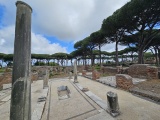
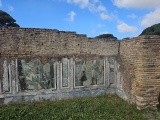



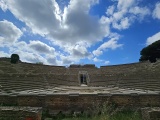



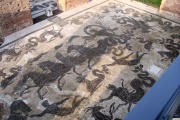
Do not use the above information on other web sites or publications without permission of the contributor.
Click here to see more info for this site
Nearby sites
Click here to view sites on an interactive map of the areaKey: Red: member's photo, Blue: 3rd party photo, Yellow: other image, Green: no photo - please go there and take one, Grey: site destroyed
Download sites to:
KML (Google Earth)
GPX (GPS waypoints)
CSV (Garmin/Navman)
CSV (Excel)
To unlock full downloads you need to sign up as a Contributory Member. Otherwise downloads are limited to 50 sites.
Turn off the page maps and other distractions
Nearby sites listing. In the following links * = Image available
21.3km NE 38° Gregorian Etruscan Museum* Museum
21.8km NE 46° Rome.* Ancient Village or Settlement
21.9km NE 44° Sais - Piazza Minerva Obelisk* Standing Stone (Menhir)
21.9km NE 45° Lupercale Shrine* Cave or Rock Shelter
22.7km NE 50° Karnak Temple of Amun Lateran Obelisk* Standing Stone (Menhir)
22.8km NE 41° Heliopolis Seti I Piazza del Popolo Obelisk* Standing Stone (Menhir)
23.3km NE 46° Heliopolis Ramesses II Termini Obelisk* Standing Stone (Menhir)
32.1km NNW 330° Cerveteri Necropoli della Banditaceia* Rock Cut Tomb
34.7km E 96° Nemi Temple of Diana* Ancient Temple
44.2km SE 133° Nettuno Tomb Burial Chamber or Dolmen
53.9km N 354° Sutri amphitheatre* Ancient Village or Settlement
54.0km N 354° Sutri Necropolis* Rock Cut Tomb
56.7km NNW 336° Civitella Cesi Etruscan Tomb* Rock Cut Tomb
57.5km NNW 335° Casale Vignale Necropolis Chambered Cairn
58.4km ESE 108° Antica Norba* Ancient Village or Settlement
59.0km NNW 343° Barbarano Romano Etruscan Necropolis Chambered Tomb
61.0km E 96° Giunone Moneta (Segni)* Ancient Village or Settlement
63.2km NNW 338° Pian di Vescovo Rock Cut Tomb
69.1km NW 324° Tarquinia* Ancient Village or Settlement
70.8km NNW 336° Norchia Etruscan Necropolis* Rock Cut Tomb
73.1km N 354° Mount Cimino Votive Site* Ancient Temple
80.6km N 358° Bomarzo Etruscan 'Pyramid' Altar* Ancient Temple
84.5km NNW 329° San Giulano Rock Cut tombs Rock Cut Tomb
87.1km E 92° Alatri Acropolis* Hillfort
87.6km SE 131° Mura Ciclopiche San Felice Circeo Stone Fort or Dun
View more nearby sites and additional images



 We would like to know more about this location. Please feel free to add a brief description and any relevant information in your own language.
We would like to know more about this location. Please feel free to add a brief description and any relevant information in your own language. Wir möchten mehr über diese Stätte erfahren. Bitte zögern Sie nicht, eine kurze Beschreibung und relevante Informationen in Deutsch hinzuzufügen.
Wir möchten mehr über diese Stätte erfahren. Bitte zögern Sie nicht, eine kurze Beschreibung und relevante Informationen in Deutsch hinzuzufügen. Nous aimerions en savoir encore un peu sur les lieux. S'il vous plaît n'hesitez pas à ajouter une courte description et tous les renseignements pertinents dans votre propre langue.
Nous aimerions en savoir encore un peu sur les lieux. S'il vous plaît n'hesitez pas à ajouter une courte description et tous les renseignements pertinents dans votre propre langue. Quisieramos informarnos un poco más de las lugares. No dude en añadir una breve descripción y otros datos relevantes en su propio idioma.
Quisieramos informarnos un poco más de las lugares. No dude en añadir una breve descripción y otros datos relevantes en su propio idioma.